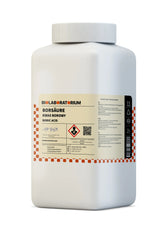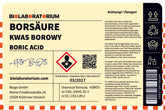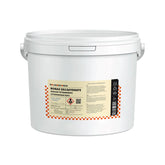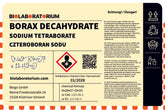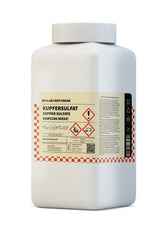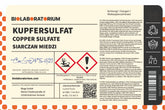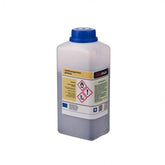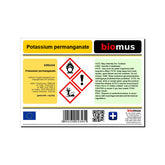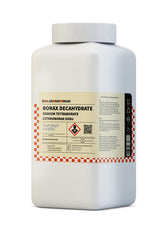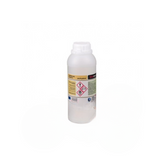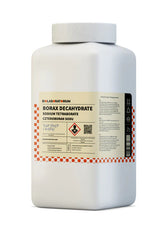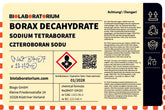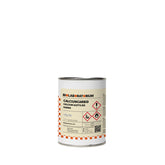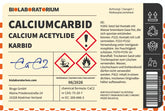Aluminium borate – key compounds in materials chemistry and catalysis
Aluminum borates are a fascinating class of inorganic compounds that play an important role in a wide range of industrial applications. These materials are characterized by their unique structural, thermal, and catalytic properties and are used in areas such as ceramics manufacturing, the glass industry, and heterogeneous catalysis.
The structure of aluminum borates
Aluminum borates consist of aluminum oxide (Al₂O₃) and boron oxide units (B₂O₃), which aggregate into complex crystal structures. The exact composition and structure depend on the synthesis conditions but can generally be described by the formula AlBO₃.
In this compound, the aluminum atoms are surrounded by six oxygen atoms, while the boron atoms are coordinated by three oxygen atoms. These building units link three-dimensionally into a crystal lattice, which can exhibit different symmetries depending on the synthesis route.
The variety of possible crystal structures and compositions makes aluminum borates highly interesting materials for materials research. Through targeted modifications of synthesis parameters, the properties of these compounds can be specifically controlled and tailored to specific applications.
Applications of aluminum borates
Ceramic materials
One of the main application areas of aluminum borates is the ceramics industry. The high thermal stability, hardness, and chemical resistance of these materials make them ideal components for technical ceramics. Aluminum borates are used in high-performance ceramics for applications at high temperatures, such as in combustion chambers, thermal insulation, or abrasive bodies.
Additionally, aluminum borates can be used as additives in glazes and enamels to improve their mechanical properties and resistance. By being incorporated into the glass structure, they contribute to increasing scratch resistance, impact toughness, and temperature resistance.
Catalysts and support materials
Another important application area of aluminum borates is heterogeneous catalysis. The combination of aluminum oxide and boron oxide units gives these materials a high specific surface area and a variety of acidic and basic sites. These properties make aluminum borates excellent support materials for catalytically active components.
In petrochemistry, aluminum borates are used, for example, as supports for catalysts in cracking reactions, reforming processes, or hydrogenation catalysis. Through the interaction between the support and the catalyst metal, catalytic activity and selectivity can be specifically influenced.
Furthermore, aluminum borates are used in exhaust gas aftertreatment, where they serve as support materials for oxidation or reduction catalysts. Their thermal stability and resistance to chemical influences are of great importance here.
Further applications
In addition to the main applications mentioned, there are a number of other uses for aluminum borates:
- In the glass industry, they are used as melting aids, decolorizers, and stabilizers to improve the properties of glasses.
- In the refractory industry, aluminum borates serve as starting materials for the production of high-temperature resistant products such as refractory bricks or insulation materials.
- In electronics, aluminum borates are used as dielectrics in capacitors or as additives in ceramic substrates for high-frequency applications.
- In medical technology, aluminum borates are used as fillers in bone cement or as components in dental fillings.
Synthesis and production of aluminum borates
The production of aluminum borates is typically carried out through solid-state reactions of aluminum oxide and boron oxide at high temperatures. By targeted variation of starting materials, stoichiometry, temperature, and atmosphere, the desired crystal structures and compositions can be adjusted.
In addition to classical solid-state synthesis, there are also wet chemical processes in which aluminum and boron compounds react with each other in solution. Through precipitation, hydrothermal synthesis, or sol-gel processes, aluminum borates with defined morphologies and particle sizes can be produced.
The choice of synthesis method depends on the desired application area. For technical ceramic applications, solid-state reactions at high temperatures are often used, while for catalytic applications, wet chemical processes with controlled particle size distribution are more commonly employed.
Outlook and research trends
The research and development of aluminum borates is a dynamic field with many exciting perspectives. Current research activities focus, among other things, on:
- The synthesis of novel aluminum borate structures with tailored properties
- The study of catalytic activity and selectivity of aluminum borates in various reactions
- The optimization of manufacturing processes to increase efficiency and cost-effectiveness
- The development of aluminum borates for special high-temperature applications
- The investigation of interactions between aluminum borates and other material components
With their diverse application possibilities in materials science, catalysis, and ceramic technology, aluminum borates will continue to play an important role in the future. Through continuous research and innovations, the potential of these fascinating compounds can be further unlocked and made usable for new products and technologies.

